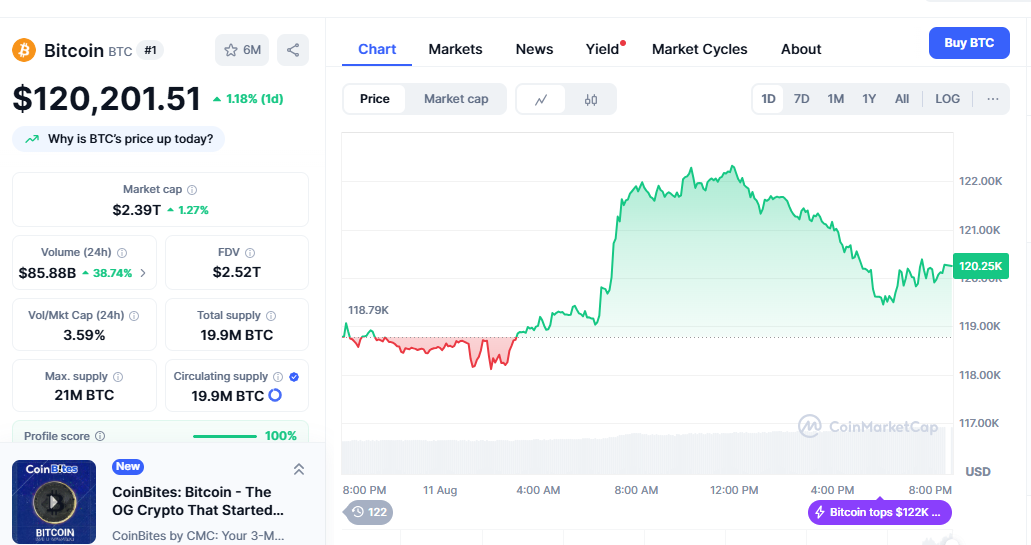
The cryptocurrency mining landscape has evolved dramatically, and finding the best bitcoin mining hardware 2025 requires careful analysis of performance, efficiency, and return on investment. As Bitcoin’s network difficulty continues to climb and energy costs fluctuate globally, selecting the right mining equipment has become more critical than ever for both novice and experienced miners.
Whether you’re starting your first mining operation or upgrading existing equipment, choosing the best bitcoin mining hardware 2025 can make the difference between profitable mining and operating at a loss. This comprehensive guide examines the top ASIC miners currently dominating the market, their specifications, profitability potential, and essential factors you must consider before making your investment decision.
The mining industry has witnessed remarkable technological advances in recent years, with manufacturers like Bitmain, MicroBT, and Canaan continuously pushing the boundaries of hash rate efficiency and power consumption. Understanding these developments is crucial for anyone serious about bitcoin mining profitability in today’s competitive environment.
Understanding Bitcoin Mining Hardware Evolution in 2025
The journey from CPU mining to today’s sophisticated ASIC mining rigs represents one of the most dramatic technological progressions in cryptocurrency history. Early Bitcoin miners could successfully mine using standard computer processors, but as network difficulty increased exponentially, the mining community quickly transitioned to graphics processing units (GPUs) and eventually to purpose-built Application-Specific Integrated Circuits (ASICs).
Modern bitcoin mining machines are marvels of engineering efficiency, designed specifically for the SHA-256 hashing algorithm that secures the Bitcoin network. These devices can perform trillions of calculations per second while maintaining relatively low power consumption compared to their predecessors. The best bitcoin mining hardware 2025 delivers hash rates measured in terahashes per second (TH/s), with top-tier models exceeding 200 TH/s.
The competitive landscape has intensified significantly, with major mining operations deploying thousands of units in specialized facilities. This industrial-scale mining has raised the bar for individual miners, making equipment selection even more crucial for maintaining profitability. Understanding hash rate efficiency, measured in joules per terahash (J/TH), has become essential for evaluating potential mining investments.
Power efficiency remains the primary differentiator between profitable and unprofitable mining operations. The most efficient bitcoin miners in 2025 achieve efficiency ratings below 20 J/TH, representing significant improvements over older generation hardware. This efficiency translates directly to lower electricity costs, which typically represent 60-80% of total mining operational expenses.
Top Bitcoin Mining Hardware Models for 2025
Bitmain Antminer S21 Series Analysis
The Bitmain Antminer S21 represents the pinnacle of current ASIC technology, delivering exceptional performance for serious mining operations. With a hash rate of 200 TH/s and power consumption of 3,550W, this machine achieves an impressive efficiency rating of 17.75 J/TH. The S21 Pro variant pushes performance even further, reaching 234 TH/s while maintaining competitive power efficiency.
These flagship models incorporate Bitmain’s latest 4nm chip technology, representing a significant advancement in semiconductor manufacturing for cryptocurrency mining equipment. The improved chip architecture delivers not only higher hash rates but also enhanced thermal management, crucial for maintaining stable operation in demanding mining environments.

The S21 series features advanced cooling systems with dual fans and optimized airflow design, enabling consistent performance even in high-temperature environments. This thermal efficiency directly impacts longevity and reduces maintenance requirements, important considerations for large-scale mining operations. The bitcoin mining hardware cost for S21 models typically ranges from $3,000 to $5,000, depending on market conditions and availability.
Professional miners particularly appreciate the S21’s robust build quality and comprehensive monitoring capabilities. The integrated web interface provides real-time performance metrics, temperature monitoring, and remote management features essential for efficiently operating multiple units. This level of sophistication makes the S21 series a strong contender for the best bitcoin mining hardware 2025 category.
MicroBT WhatsMiner M60 Series Performance
The WhatsMiner M60S has emerged as a formidable competitor in the high-performance mining segment, delivering 172 TH/s with 3,344W power consumption for an efficiency rating of 19.44 J/TH. MicroBT’s engineering team has focused on creating reliable, efficient miners that can operate continuously in challenging industrial environments.
The M60 series incorporates MicroBT’s proprietary cooling technology, featuring optimized heat sink designs and intelligent fan control systems. This thermal management approach ensures consistent hash rates while minimizing noise levels, making these units suitable for both industrial and smaller-scale operations. The mining hardware specifications include support for multiple pool configurations and automatic failover capabilities.
Build quality represents a significant strength of the WhatsMiner series, with robust components designed for extended operation cycles. The M60S utilizes high-grade capacitors and power supply units that maintain stability under varying electrical conditions. This reliability factor has made MicroBT miners popular among operators prioritizing uptime and minimal maintenance requirements.
The bitcoin mining equipment prices for M60 series models remain competitive with comparable Bitmain offerings, typically falling within the $2,800 to $4,200 range. This pricing strategy, combined with strong performance metrics, positions the M60S as an attractive option for miners seeking alternatives to market-leading brands while maintaining profitability expectations.
Canaan AvalonMiner 1466 Specifications
Canaan’s AvalonMiner 1466 represents the company’s latest generation of mining hardware, delivering 150 TH/s with 3,400W power consumption for an efficiency rating of 22.67 J/TH. While not achieving the absolute highest hash rates, the 1466 offers compelling value proposition for miners prioritizing cost-effectiveness and proven reliability.
The AvalonMiner series has built a reputation for consistent performance and longevity, with many first-generation units still operating profitably after years of continuous use. This track record provides confidence for miners investing in long-term mining operations where equipment durability directly impacts return on investment calculations.
Canaan’s approach to thermal design emphasizes steady-state operation over peak performance, resulting in miners that maintain consistent hash rates across varying environmental conditions. The 1466 features dual-fan cooling with temperature-controlled speed adjustment, balancing performance requirements with noise considerations for diverse deployment scenarios.
The affordable bitcoin mining hardware category benefits significantly from Canaan’s competitive pricing strategy, with AvalonMiner 1466 units typically available for $2,200 to $3,500. This price point makes advanced ASIC technology accessible to smaller mining operations while still delivering the efficiency necessary for profitable operation in competitive markets.
Bitcoin Mining Profitability Factors in 2025
Electricity Cost Impact on Mining Returns
Electricity costs represent the most significant ongoing expense for bitcoin mining operations, typically accounting for 60-80% of total operational costs. Understanding your local electricity rates and optimizing power consumption directly determines the profitability of any bitcoin mining investment. The best bitcoin mining hardware 2025 must justify its higher initial cost through superior power efficiency over extended operation periods.
Regional electricity pricing varies dramatically worldwide, creating opportunities for strategic mining location selection. Areas with subsidized or surplus renewable energy often provide the most attractive environments for profitable mining operations. Industrial electricity rates in regions like Kazakhstan, Russia, and certain U.S. states can range from $0.03 to $0.08 per kWh, significantly impacting profitability calculations.
Power infrastructure requirements extend beyond simple electricity costs to include reliable supply, adequate cooling, and proper electrical installations. Modern ASIC miners require stable power delivery and generate substantial heat, necessitating professional electrical work and ventilation systems. These infrastructure investments should be factored into total cost of ownership calculations when evaluating mining hardware options.
Bitcoin mining calculators provide essential tools for modeling profitability under various electricity cost scenarios. These calculators incorporate current network difficulty, Bitcoin price, and equipment specifications to project potential returns. However, miners must account for difficulty adjustments and price volatility when making long-term investment decisions based on current profitability projections.
Also Read: Complete Bitcoin Mining Rig Setup Guide 2025 – Build Your Own Mining System
Network Difficulty and Hash Rate Competition
Bitcoin’s network difficulty adjustment mechanism ensures block generation times remain consistent despite fluctuating total network hash rate. As more miners join the network with powerful ASIC mining equipment, difficulty increases proportionally, reducing individual miner rewards. This dynamic creates constant competitive pressure requiring efficient hardware to maintain profitability.
The global hash rate has grown exponentially over recent years, driven by institutional mining operations deploying thousands of next-generation miners. This industrial-scale expansion has raised the minimum efficiency threshold for profitable home mining, making the selection of high-efficiency mining hardware increasingly critical for smaller operations.
Mining pool participation has become essential for most miners, providing more predictable income streams compared to solo mining. Pool selection impacts net profitability through fee structures, payout methods, and reliability. The best mining pools for 2025 typically charge 1-3% fees while offering features like merged mining, detailed statistics, and mobile monitoring applications.
Understanding difficulty projection models helps miners anticipate future profitability scenarios and make informed hardware purchasing decisions. Historical difficulty trends suggest continued growth, requiring miners to factor in reduced per-unit profitability over time. This trend emphasizes the importance of selecting the most efficient available hardware to maximize profitable operation periods.
Essential Setup Requirements for Bitcoin Mining Hardware
Power Infrastructure and Electrical Safety
Proper electrical infrastructure forms the foundation of any successful bitcoin mining operation. Modern ASIC miners require dedicated 220V circuits with appropriate amperage ratings to handle their substantial power demands safely. The best bitcoin mining hardware 2025 typically consumes 3,000-4,000 watts, necessitating professional electrical installation to prevent safety hazards and ensure optimal performance.
Circuit breaker sizing must account for continuous load requirements, with electrical codes typically requiring circuits to be rated for 125% of continuous load current. This safety margin prevents nuisance tripping and potential fire hazards associated with overloaded electrical systems. Professional electricians familiar with mining operations can design proper power distribution systems for multi-unit installations.
Power quality considerations include voltage regulation, harmonic distortion, and power factor correction. ASIC miners can be sensitive to voltage fluctuations and poor power quality, potentially resulting in reduced hash rates or equipment damage. Installing appropriate surge protection and power conditioning equipment protects valuable mining investments while ensuring stable operation.
Mining facility design should incorporate future expansion capabilities, allowing for additional equipment installation without major electrical system modifications. Scalable power distribution systems enable miners to grow their operations efficiently while maintaining proper safety standards and electrical code compliance throughout the expansion process.
Cooling and Ventilation Systems
Effective thermal management directly impacts mining hardware performance, longevity, and profitability. The best bitcoin mining hardware 2025 generates substantial heat that must be efficiently removed to maintain optimal operating temperatures. Inadequate cooling can reduce hash rates, increase failure rates, and void equipment warranties.
Industrial-grade ventilation systems typically employ negative pressure designs, exhausting hot air while drawing cool ambient air across mining equipment. Proper airflow calculations ensure adequate air changes per hour to maintain target temperatures even during peak summer conditions. Professional HVAC design becomes essential for large-scale mining operations to achieve optimal thermal performance.
Mining container solutions offer turnkey approaches to cooling and infrastructure management, particularly attractive for medium-scale operations. These purpose-built containers include integrated cooling systems, power distribution, and monitoring equipment designed specifically for ASIC mining applications. Container solutions can significantly reduce deployment time and infrastructure complexity.
Noise considerations become important for residential or urban mining operations, as powerful ventilation systems and ASIC miners generate substantial noise levels. Sound dampening materials, strategic equipment placement, and variable-speed fans can help manage noise issues while maintaining adequate cooling performance for profitable mining operations.
Monitoring and Management Systems
Comprehensive monitoring systems enable efficient management of multi-unit mining operations while identifying potential issues before they impact profitability. Modern bitcoin mining software provides real-time performance metrics, temperature monitoring, pool management, and remote restart capabilities essential for maintaining optimal operation.
Mining farm management software typically includes features like hash rate monitoring, power consumption tracking, profitability calculations, and automated alert systems. These tools help operators quickly identify underperforming units, optimize pool configurations, and schedule maintenance activities to minimize downtime and maximize returns.
Remote monitoring capabilities become particularly valuable for unmanned mining facilities or distributed operations across multiple locations. Cloud-based monitoring platforms enable operators to track performance, receive alerts, and manage mining operations from anywhere with internet connectivity. This flexibility supports efficient operation of larger mining investments.
Data logging and historical analysis features help miners identify performance trends, optimize operational parameters, and plan equipment maintenance schedules. Understanding hash rate patterns, temperature cycles, and power consumption variations enables proactive management decisions that improve overall mining profitability and equipment longevity.
Investment Considerations and ROI Analysis
Initial Hardware Investment Costs
The bitcoin mining hardware cost represents the largest upfront investment for new mining operations, requiring careful analysis of purchase price, shipping costs, and import duties. Current market conditions show significant price volatility for ASIC miners, influenced by Bitcoin price movements, manufacturing capacity, and global demand patterns.
Bulk purchasing opportunities often provide substantial cost savings for larger mining operations, with manufacturers offering volume discounts for orders exceeding 100 units. However, bulk purchases require significant capital investment and careful timing to avoid purchasing equipment before major efficiency improvements become available.
Financing options for mining hardware include traditional equipment loans, lease agreements, and manufacturer financing programs. These alternatives can help miners preserve working capital while accessing the latest technology, though financing costs must be factored into profitability calculations. The best financing terms typically offer competitive interest rates with flexible repayment schedules aligned with mining revenue streams.
Equipment depreciation significantly impacts mining investment returns, with ASIC miners typically losing 20-40% of their value annually due to technological advancement and increasing network difficulty. This depreciation schedule must be considered when evaluating total cost of ownership and planning equipment replacement cycles for sustained profitability.
Market Timing and Technology Cycles
Understanding technology release cycles helps miners optimize purchase timing to avoid buying equipment shortly before next-generation releases. Major manufacturers typically announce new models 6-12 months before availability, providing advance notice for strategic purchasing decisions. The latest bitcoin mining technology often delivers 20-30% efficiency improvements over previous generations.
Market volatility affects both Bitcoin prices and mining hardware values, creating opportunities for strategic equipment purchases during market downturns. Experienced miners often accumulate equipment during bear markets when prices are depressed, positioning themselves for improved profitability during subsequent price recoveries.
Pre-order strategies can provide access to the latest technology at potentially lower prices, but carry risks of delayed delivery, specification changes, or manufacturer issues. Balancing the benefits of early access against the risks of pre-ordering requires careful evaluation of manufacturer track records and market conditions.
Technology roadmaps from major chip manufacturers provide insights into future efficiency improvements and help miners anticipate obsolescence timelines for current equipment. Understanding these development cycles enables more informed decisions about equipment purchasing, timing, and replacement planning for long-term mining operations.
Future Trends in Bitcoin Mining Technology

Semiconductor Advancement Impact
The ongoing evolution of semiconductor manufacturing technology continues driving improvements in ASIC mining efficiency. Current 4nm and 3nm chip processes deliver significant performance and efficiency gains over older 7nm and 16nm technologies. Future nodes promise even greater improvements, though physical limitations are approaching theoretical boundaries.
Next-generation mining chips focus increasingly on power efficiency optimization rather than pure hash rate increases, reflecting the industry’s recognition that electricity costs dominate operational expenses. Advanced power management features, including dynamic voltage scaling and intelligent thermal throttling, help maximize efficiency across varying operating conditions.
Packaging innovations like advanced cooling integrated circuits and multi-chip modules enable higher density designs while maintaining thermal performance. These developments allow manufacturers to increase hash rates within similar form factors, improving space efficiency for large-scale mining operations while reducing infrastructure costs per terahash.
Industry consolidation among chip manufacturers may impact future technology development and pricing, with larger companies potentially accelerating innovation through increased research and development investments. Understanding these industry dynamics helps miners anticipate future technology availability and pricing trends for strategic planning purposes.
Environmental and Regulatory Considerations
Growing environmental scrutiny of bitcoin mining operations drives increased focus on renewable energy integration and carbon footprint reduction. The most sustainable mining operations increasingly utilize hydroelectric, solar, and wind power sources to address environmental concerns while often achieving lower electricity costs.
Regulatory developments in major mining jurisdictions may impact equipment requirements, operational standards, and tax treatment of mining activities. Staying informed about regulatory trends helps miners anticipate compliance requirements and adjust operational strategies to maintain profitability within evolving legal frameworks.
Carbon credit markets and environmental reporting requirements may create additional operational considerations for mining operations, particularly larger facilities seeking institutional investment or public market participation. These factors could influence equipment selection toward more efficient models that minimize environmental impact per unit of hash rate.
Grid stability concerns in some regions have led to power restrictions or time-of-use requirements for mining operations. Future mining hardware may incorporate features to support demand response programs and grid stability initiatives, potentially providing additional revenue streams while reducing regulatory risks.
Conclusion
Selecting the best bitcoin mining hardware 2025 requires comprehensive analysis of performance specifications, efficiency ratings, total cost of ownership, and long-term profitability projections. The rapidly evolving technology landscape demands careful consideration of both current capabilities and future development trends to make informed investment decisions.
Success in modern bitcoin mining depends on choosing equipment that can maintain profitability across varying market conditions, network difficulty changes, and evolving regulatory environments. The miners highlighted in this guide represent the current state-of-the-art technology, each offering distinct advantages for different operational requirements and investment strategies.
The best bitcoin mining hardware 2025 combines exceptional efficiency, proven reliability, and competitive pricing to deliver sustainable returns in an increasingly competitive environment. Whether you’re starting your first mining operation or expanding existing capacity, thorough research and careful planning remain essential for achieving your mining investment objectives.
Ready to start your mining journey with the best bitcoin mining hardware 2025? Evaluate your electricity costs, calculate potential returns using current market conditions, and consider your long-term mining strategy before making your investment decision. The right hardware choice today can determine your mining success for years to come.








